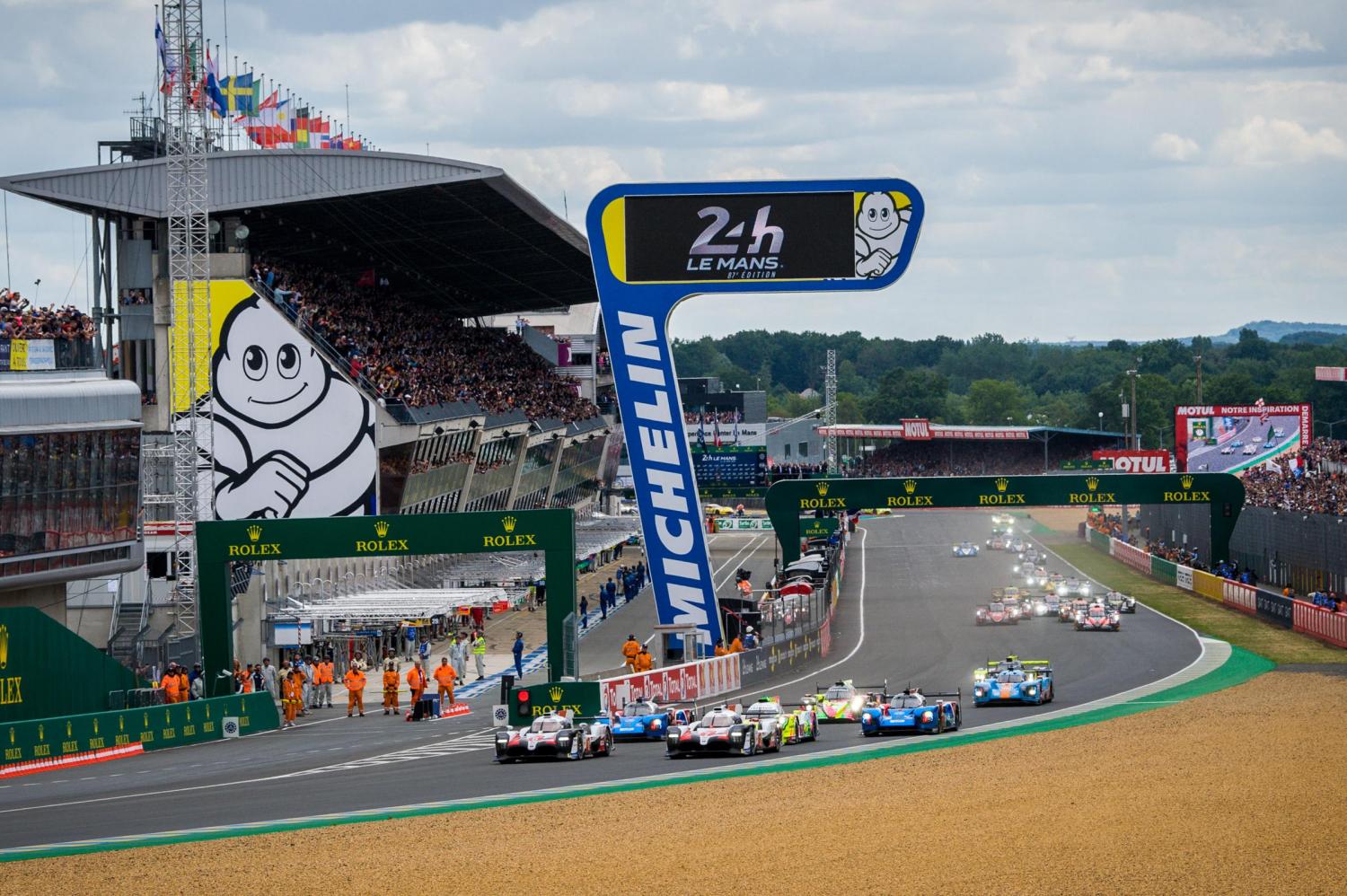THE RACE’S HISTORY
The 24 Hours of Le Mans was created by the Automobile Club de l’Ouest, a motoring organisation founded in 1906. The first race was held on 26-27 May 1923 on a circuit near Le Mans. The competition was designed to boost and promote technical innovation and to encourage the development of the automotive industry. From the radial tyre to the emergence of the hybrid engine, it has been one innovation after another. And now the ACO has set itself a new challenge – Mission H24, with the aim of fielding a car driven by hydrogen power at the 2024 race.
THE CIRCUIT
The 24 Hours of Le Mans circuit has one distinguishing feature in that sections of it are made up of public roads. It is now 13.626 km long but has been modified several times over the years to maximise safety for competitors. From the Pit Straight to the Dunlop Chicane, the Forest Esses, Mulsanne and the Ford Chicane, the 24 Hours of Le Mans circuit is designed for speed and spectacular racing action.
THE CLASSES
The French endurance classic is part of the FIA WEC World Endurance Championship and is split into four classes: Le Mans Prototype 1 (LMP1) hybrid and non-hybrid, Le Mans Prototype 2 (LMP2) , Le Mans Grand Tourisme Endurance Pro (LMGTE Pro), and Le Mans Grand Tourisme Endurance Am (LMGTE Am), each class with its own technical specifications (engines permitted, chassis, etc.). For this, the 88th staging of the 24 Hours of Le Mans, there are five cars in the LMP1 class, 24 in LMP2, eight in LMGTE Pro, and 22 in LMGTE Am, making a total 59 teams.
THE DRIVERS
There are 59 cars in the 2020 24 Hours of Le Mans with 177 drivers (6 women) from 30 countries. Great Britain boasts the highest number of drivers, with eight teams, 11 cars and 30 drivers, followed by France with six teams, seven cars and 28 drivers. Italy completes the top three.
STARTING PROCEDURE
The special “Le Mans-style start” lasted until 1970. The drivers were lined up on the left of the track, one behind the other, opposite their cars which were parked on the right. When the French flag was lowered, they ran to their cars, started their engines and set off around the track. For safety reasons, the starting procedure was eventually changed: now, after a formation lap, there is a rolling start.
THE FUTURE: MISSION H24
Mission H24 was launched in September 2018, following a partnership between the Automobile Club de l'Ouest, GreenGT, Total, Michelin, Symbio and Plastic Omnium. The aim is to design a prototype that is entirely powered by hydrogen and to introduce a hydrogen-electric class in 2024. Since spring 2019, H24Racing, the team created especially for Mission H24, has pursued the work initiated by GreenGT to complete the development of the prototype. Mission H24 is fully in line with the ACO’s long-standing mission and will take motor racing and endurance into a new zero-carbon era as part of the ecological transition. The new car is emissison-free as the only thing it will give off is water! Find out more about Mission H24.
The 89th 24 Hours of Le Mans will take place on 12-13 June 2021.
PHOTO: LE MANS (SARTHE, FRANCE), CIRCUIT DES 24 HEURES, 24 HOURS OF LE MANS, SATURDAY 15 JUNE 2019. As the French flag is waved, the cars set off for their first lap of the 87th 24 Hours of Le Mans.

